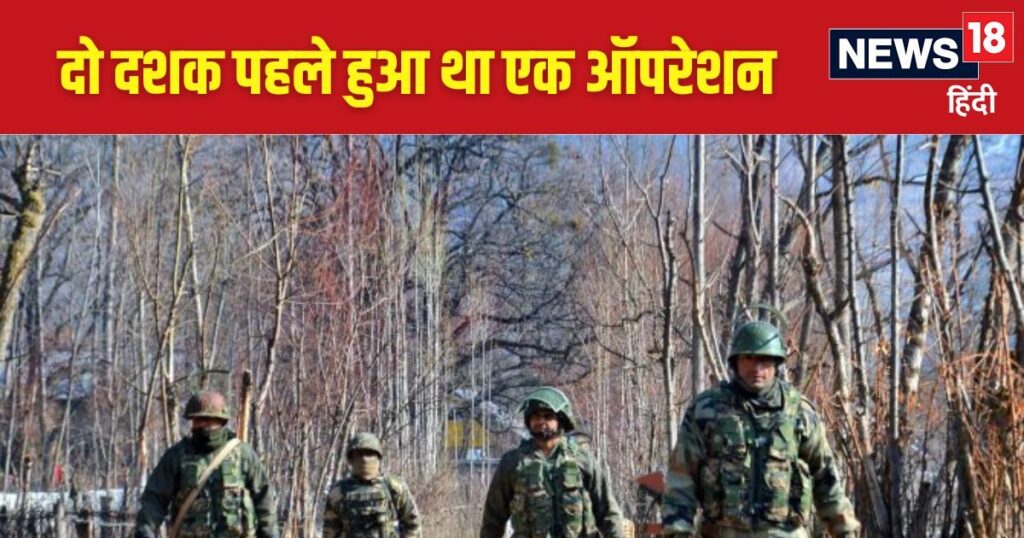What is Pir Panjal Punch: Terrorism is once again raising its head in Jammu and Kashmir. If it is not crushed immediately, then this union territory, considered the crown of the country, can once again get caught in the same vicious circle in which it has been entangled for years. On July 15, an army officer and four soldiers were martyred in an encounter with terrorists in Doda district of Jammu and Kashmir. Since the swearing-in of the new government at the Centre on June 9, four terrorist attacks have taken place in Jammu and Kashmir and the security forces have suffered heavy losses in all of them. 9 people were killed and 41 others were injured in the attack on a bus full of pilgrims in Reasi. The special thing is that all these attacks have taken place in the Jammu region, which shows a change in the way terrorists work in Kashmir.
There was an operation two decades ago.
The recent history of counter-terrorism and anti-infiltration operations in Jammu and Kashmir shows that despite political turmoil in Pakistan, terrorist organisations’ operations in North Kashmir come under pressure and they continue to look for ‘soft spots’ south of Pir Panjal. To stop this, the army has geared up. At least three brigades of additional troops are being deployed in the Jammu range. This is reminiscent of an operation carried out by the army in these same forests two decades ago. In the year 2003, the Indian Army launched Operation Sarpvinash to flush out terrorists who had infiltrated from across the border. The terrorists then set up their camps in the dense forests south of the Pir Panjal range, especially in the Hilkaka area of Poonch.
Also read- Explainer: Terrorism suddenly increased in Jammu? What is the reason behind the change in strategy of terrorist groups
Know the reason behind increasing attacks in Jammu?
This time too, the terrorists have set up several hideouts inside caves. They built bunkers in the dhoks (shelters for humans and cattle) of migrant Bakkarwals and established a communication network. The area leading to the Pir Panjal range through Hilkaka, south of Mendhar, is one of the shortest routes for infiltrators to enter the Kashmir Valley from across the Line of Control. The terrorists have deliberately chosen this area to set up camp. Occupying this area could possibly provide them a route in case of a military operation by Pakistan and make infiltration of terrorists easier. Dense forests and steep mountain slopes make the area suitable for them. Whenever Indian soldiers searched the area, the terrorists were able to hide there and overpowered them in the event of an encounter. As a result, security personnel lost their lives.
What was Operation Sarp Vinash?
The current situation of encounters in the Doda region is reminiscent of 2003 when General NC Vij was the Army Chief and the Northern Command led by Lieutenant General Rustam Nanavati launched Operation Sarp Vinash in the Rajouri-Poonch sector of Jammu and Kashmir to clear the terror-affected hilly areas. In which the army was deployed on both sides of the Pir Panjal Range to target the terrorists. The army had launched its biggest ever anti-terrorism operation in Jammu and Kashmir since April 2003. Because of the Pir Panjal Range, it is also called the Army’s Pir Panjal Punch.
Also read- Olympic Special: How much money do Olympic medal winners get in India, which country gives the most
10,000 soldiers were involved
The operation, which lasted for about three months, was carried out in an area of about 150 square kilometres in the high forested mountains, surrounded by three major mountain ranges. About 10,000 soldiers of the 15th Corps and 16th Corps were involved in the operation. MI-17 helicopters were used to airlift the soldiers to the Bakarwal village Hilkaka, which was occupied by the terrorists. The helicopters were also used to destroy the concrete bunkers built by the infiltrators.
What was the result of the operation
About 100 terrorists were killed in this operation. A large number of different types of weapons, piles of explosives, about 7,000 kg of ration, medicines and communication equipment were recovered. About 40-50 terrorist hideouts were destroyed in the operation. This operation completely drove out the terrorists. Complete peace was established in the area, which lasted till the year 2017-18. Although terrorist incidents continued to take place in the valley except in the outskirts of Jammu, major attacks on security forces started again in the region from 2021 onwards.
Also read- What is India’s K9 squad, which was specially called for security in Paris Olympics
Why was Operation Sarp Vinash launched?
When Operation Sarp Vinash was launched in 2003, the memories of the Kargil War (1999) were fresh. Then after the terrorist attack on Parliament on 13 December 2001, the Indian armed forces had launched Operation Parakram, a massive mobilisation exercise along the border with Pakistan that lasted for quite some time. When Operation Sarp Vinash was launched in early 2003, inputs had revealed that more than 300 foreign terrorists who had infiltrated across the Line of Control (LoC) had set up camps in the areas of Surankot and Hilkaka. These terrorists belonging to several Pakistan-based organisations had established their dominance in the area and were gaining a foothold.
What is Pir Panjal Range
Pir Panjal Range is a range of the Himalayas that extends to the Indian states of Himachal Pradesh, Jammu and Kashmir and Pakistan-occupied Kashmir. Pir Panjal is also the largest mountain range of the lower Himalayas. It reaches a great height.
Tags: Indian Army, Jammu and Kashmir encounter, jammu kashmir, Jammu Kashmir Terrorist
FIRST PUBLISHED : July 19, 2024, 13:04 IST

